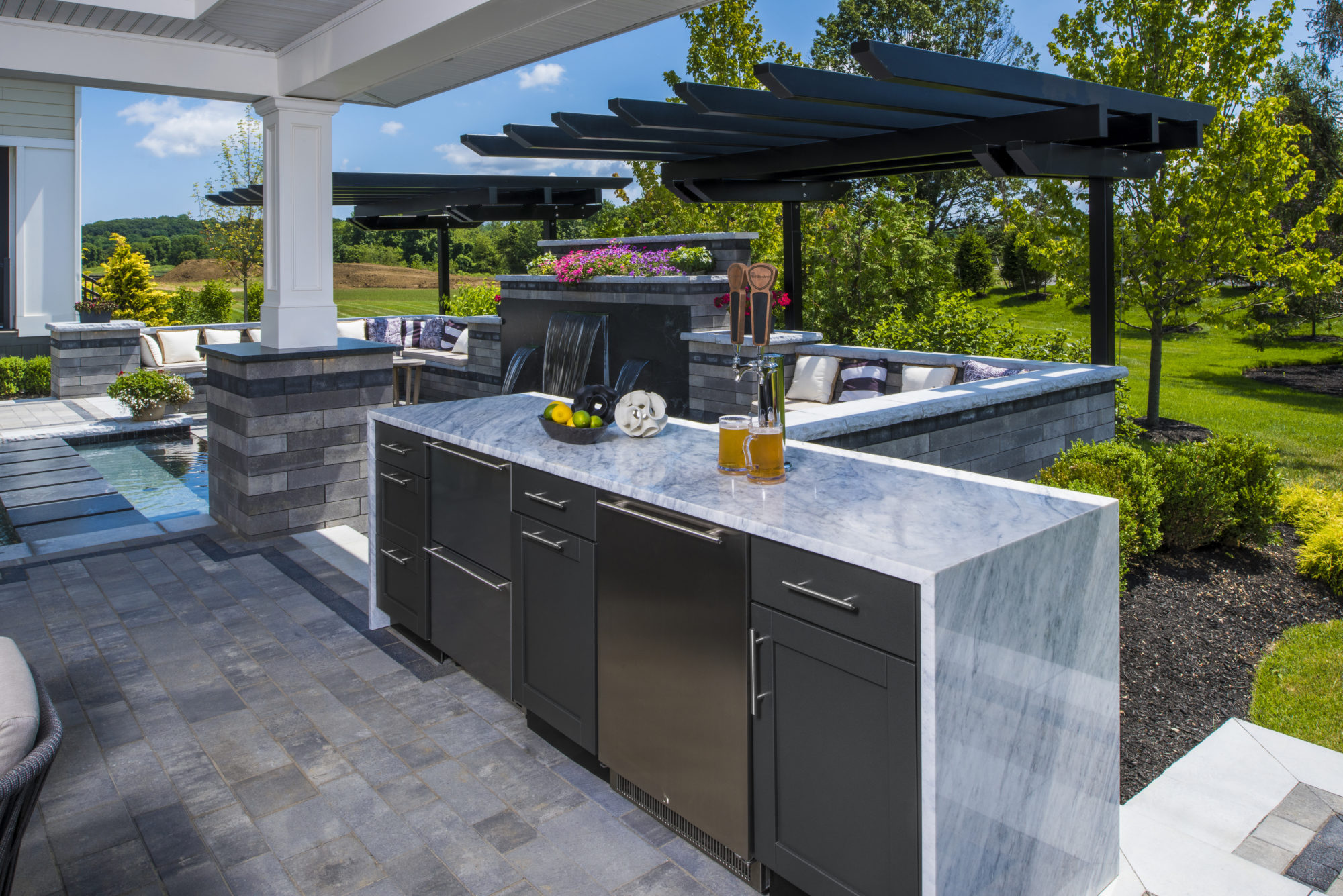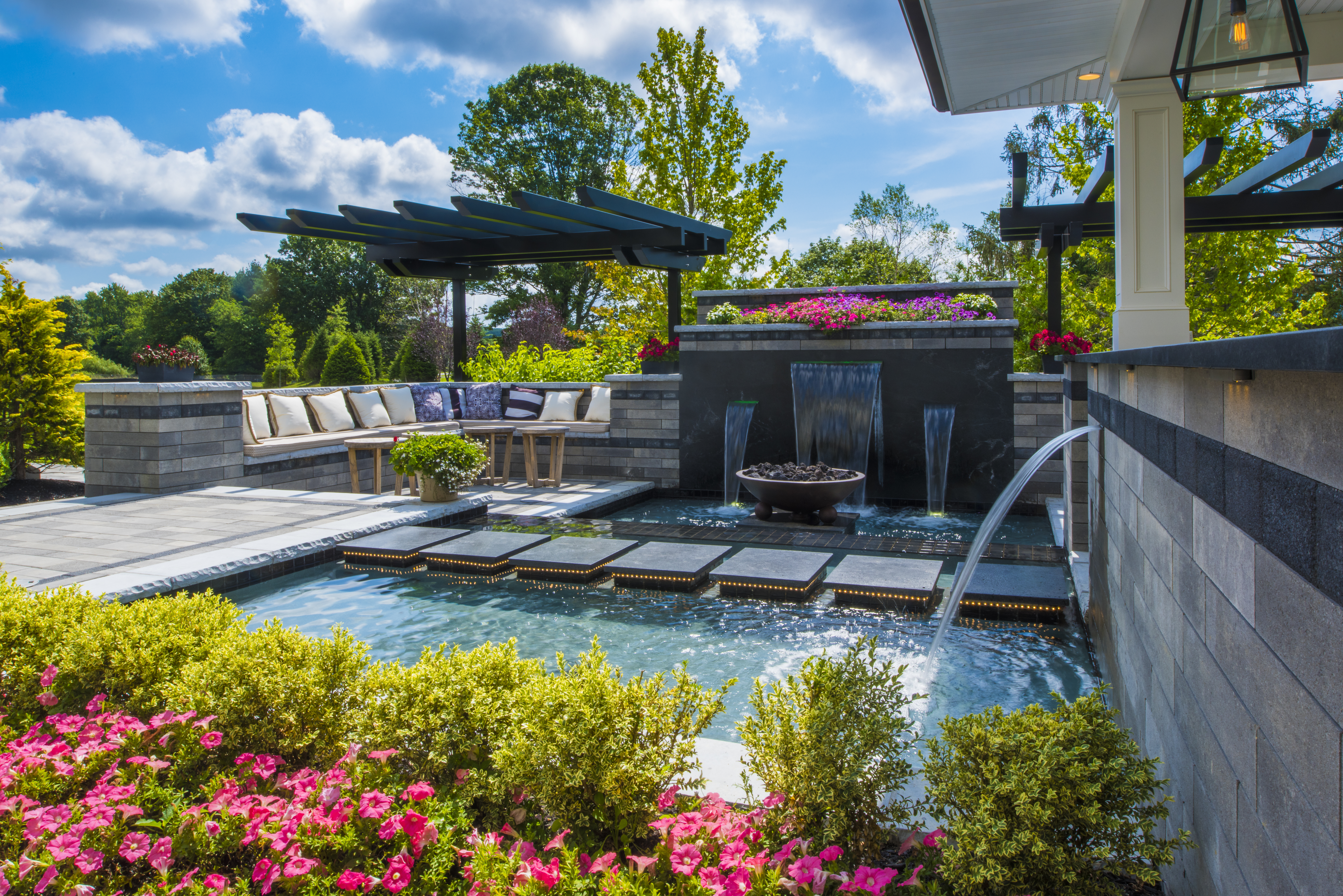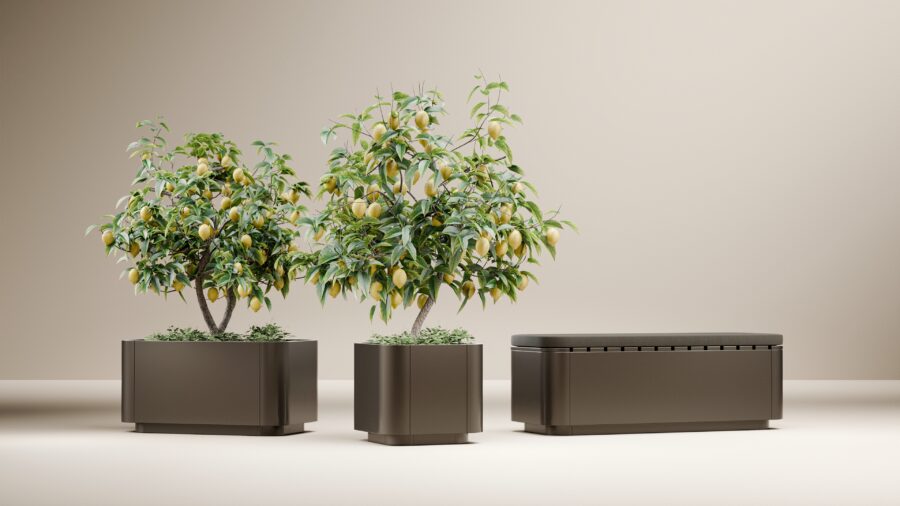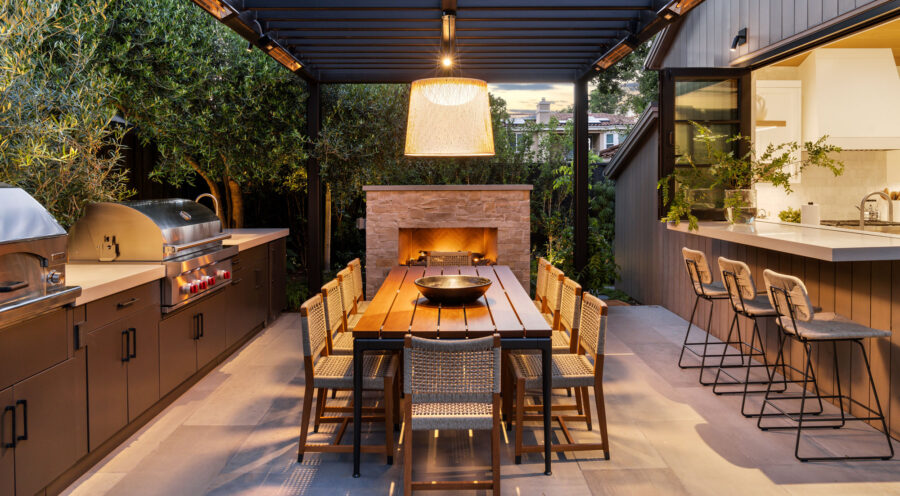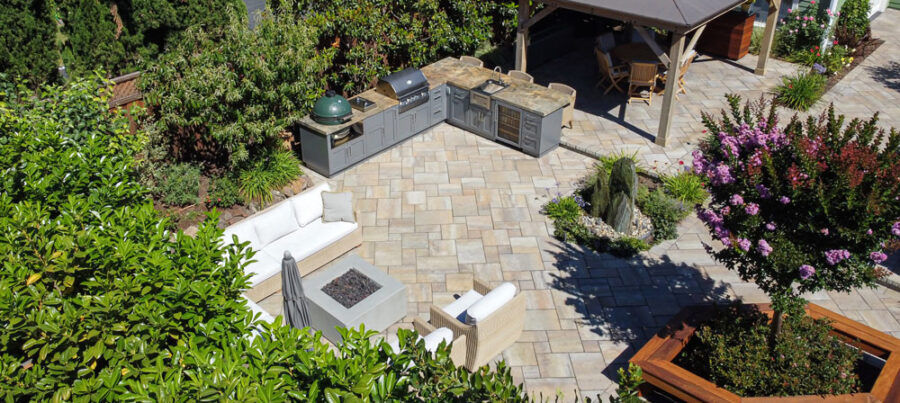Designing and building an outdoor kitchen is undoubtedly an extensive process, requiring a team of expert consultants to ensure that the project runs smoothly from start to finish. Although it is far from a DIY project, taking a proactive approach in learning about the outdoor kitchen process will be beneficial when you design your own outdoor kitchen, whether you choose Danver or another brand. Here, we provide the one-stop-shopping convenience of discussing the common important features among the best outdoor kitchens, such as how they add value, layout shape options, where to put one, material and shading options, and design ideas.
What is an Outdoor Kitchen?
An outdoor kitchen is an area outside of the indoor living space – in a backyard, on an outdoor patio, on a rooftop, under a pergola, or in an indoor-outdoor Florida Room – that includes features to prepare and cook a meal and clean up afterwards. Outdoor kitchens can be manufactured from different materials, and they can be customized to suit your style. In accordance with the size of the outdoor living area and the layout shape, outdoor kitchens can be outfitted with a variety of appliances and amenities and also greatly customized with colors, door styles, handles, and outdoor countertops. An optimal outdoor kitchen will be as functional as an indoor kitchen with the added luxury of being outside.
Outdoor Kitchens Add Value
An outdoor kitchen adds social and financial value to your space. Adding a luxury outdoor kitchen can increase your home value by about 30%, meaning that you will have a greater return on your investment when selling your home. It also provides outdoor entertainment for you and your guests, including all the modern conveniences of an indoor kitchen – cooking element, sink, dishwasher, and storage space – but in the great outdoors. With the bonus of customization options, outdoor kitchens are a perfect way to lend your personal style to your outdoor space with modern conveniences and plenty of entertaining capabilities.
Layout Shapes
Outdoor kitchens can be designed in many different shapes and sizes, from straight runs to G shaped layouts. Since Danver’s outdoor kitchen cabinets are available in hundreds of sizes and include fillers and finished end and back panels, you have the freedom to choose any layout shape that you wish. However, most outdoor kitchens are suited by the following common layout shapes:
- Straight run. Cabinets/appliances are placed in a straight line. This layout is suitable for small outdoor spaces.
- L Shaped. Cabinets/appliances in an L shape, which creates a natural work triangle with appliances and workstations.
- U Shaped. Universally beneficial, a U shaped outdoor kitchen has three sides of cabinets/appliances with open space in the middle to form a U shape. It also incorporates two work triangles.
- G Shaped. Essentially a U shaped layout with a partial fourth wall of cabinets. This layout is suitable for large spaces and includes at least two work triangles.
Where to Put an Outdoor Kitchen?
If you choose a brand like Danver for your outdoor kitchen design, you can put your outdoor kitchen virtually anywhere that you have the space. Since our cabinets are designed to suit any layout shape, they can be placed anywhere from a cliff overlooking the ocean to an urban rooftop. Ultimately, where you put your outdoor kitchen depends on your individual entertaining requirements, needs for convenience, and whether you want to include additional amenities that will need extra space. Ideally, your outdoor kitchen will be sufficient for all your cooking and entertaining needs. However, placing your outdoor kitchen close to your indoor kitchen can be beneficial and add convenience.
Material Options
Many material options are available for every outdoor kitchen idea, which all have pros and cons and range in durability and longevity. Regardless of the material you choose, maintenance will always be required. Some of the most common options include wood, plastic, concrete, and metal (stainless steel and aluminum).
Wood Outdoor Kitchen
Wood is popular for outdoor kitchens because it is common in indoor kitchens. It is also an attractive, natural finish for the outdoors. Wood can rot when outside for lengths of time, and additional measures need to be taken for the fire risk around hot outdoor kitchen appliances like the outdoor grill or pizza oven. It can be painted or stained to protect it further, although it will require maintenance and upkeep.
Plastic Outdoor Kitchen
Since there is no concern for rusting, rotting, or corrosion with plastic, it is popular for outdoor furniture. While plastic is available in a variety of colors, the color will fade with sun exposure unless UV protections are used. Plastic will also swell and contract in the environment, which will cause the structure to warp. Additionally, there is concern for melting when used near hot appliances.
Concrete Outdoor Kitchen
Concrete is durable, cheap, and it can be painted almost any color. It is also extremely heat-resistant. However, it requires professional masonry skills to install a concrete outdoor kitchen, and it is prone to cracking and breaking over time, requiring maintenance and replacement.
Aluminum Outdoor Kitchen
Aluminum is durable in the outdoors because it does not rust – although it can corrode. Adding a powder coat finish will help to prevent the aluminum from corrosion. It is also a soft metal that is a good conductor of heat, so it is prone to denting and losing its structural integrity, as well as getting hot to the touch.
Stainless Steel Outdoor Kitchen
By far the most durable material, stainless steel is much harder and more heat resistant than aluminum. Bare stainless steel is prone to rusting in the outdoors without careful maintenance, but adding a UV resistant powder coat finish will make it virtually maintenance-free with additional protection from color fade.
Roofs, Pergolas, and Other Shading Options
When including a kitchen in your outdoor living space, there are natural elements to consider. Whether your climate sees a lot of sun or rain, shading options are universally beneficial for both your entertaining value and the life of your outdoor kitchen. Although Danver’s outdoor cabinets will remain durable in virtually every climate, covering your outdoor kitchen with shade can reduce cleaning and maintenance requirements by providing protection from the elements. In addition, a covered outdoor kitchen provides shelter from the sun and will help your bare stainless appliances be more comfortable to the touch.
A roof will provide more complete coverage and can be incorporated into a Florida Room, also known as a sunroom. A gazebo and pergola can provide protection from the sun as well, but it allows for more airflow. It is more akin to being outdoors while still having the protection. Some gazebos provide netting or closeable curtains for additional privacy and protection from pesky bugs and wildlife.
Best Outdoor Kitchen Designs
The best outdoor kitchen idea and designs will incorporate other features that will get you outdoors for more than just cooking and eating. With all the outdoor rated accessories and amenities that are available, creating an entire outdoor living experience is easier than ever.
Outdoor kitchen with a fire pit. A carefully placed outdoor fire pit offers light, warmth, and – combined with a low seating area – a relaxing space to enjoy time with family and friends.
Outdoor kitchen with a pool. Fun in the sun! An outdoor kitchen next to a pool is a perfect setup for outdoor pool parties. Grill and eat a meal only steps away from your pool.
Outdoor kitchen with a bar. What is entertainment without an outdoor bar? Create the complete package by including a bar and bar seating with your outdoor kitchen setup.
Outdoor grilling area. An outdoor kitchen would not be complete without an area for grilling, so you can cook up an outdoor feast any day of the week.
Outdoor dining area. Including an outdoor dining area is the ultimate setup for a complete outdoor living experience. Cook and eat all in one outdoor living space.
TVs and other accessories. An outdoor-rated TV is a great addition for added entertainment value in the outdoors. Gather your family and friends around to binge your favorite show or movie – or catch the latest football game.
The importance of a vent hood. In any covered indoor or outdoor cooking space, a vent hood is necessary for airflow and ventilation to remove smoke, grease, and other toxins produced from cooking. While Danver does not manufacture vent hoods, including one in an enclosed or partially enclosed space is required for safety and other benefits.
Types of Grills
While planning for your outdoor kitchen layout, it is important to determine the appropriate size and type of grill for your outdoor cooking and entertaining needs. Often, an outdoor grill is included that is too large, and it takes space away from other amenities. Here are some of the most popular types of grills:
Gas and propane. Easily the most popular, gas and propane grills ignite and cook food quickly. They provide plenty of control over temperate and cooking zones, although they do not get as hot as charcoal. You can install a natural gas line from your home to your grill to avoid replacing propane tanks.
Charcoal. Charcoal grills get extremely hot and offer that telltale charred flavor. They require more technique than other types of grills, as there are no knobs to regulate temperature. Charcoal ash can be messy to clean, and heating and cooling your charcoal grill takes longer than other types. Another alternative is the kamado grill, which uses charcoal but is made from ceramic and offers consistent convection heat.
Pellet. Wood pellet grills are popular, as they are electric and give your food a smoked flavor. They include settings to vary the temperature. They can be pricey, but no gas is required.
Electric. The main drawback of electric grills is that they do not get as hot as other types of grills. However, they heat up quickly and do not require fuel. They also tend to be smaller and are better options for grill safety.
Types of Cabinets and the Benefits
To design the ultimate outdoor kitchen, different types of cabinets should be utilized, with each type being suitable for certain purposes.
Base cabinets. Base cabinets can include full height door cabinets, drawer/door cabinets, 3 drawer cabinets, sink cabinets, and trash cabinets. Each type of base cabinet serves a different purpose, from maximum storage capabilities with a full height door, to organization with drawer cabinets, cleanliness with trash cabinets, and convenience with a sink cabinet.
Wall cabinets. Wall cabinets are beneficial for their storage, as they are primarily used for dishware and glassware for outdoor dining. Wall cabinets keep everything within easy reach while providing organization.
Appliance cabinets. The main benefit of Danver’s appliance cabinets are that they can house virtually every outdoor appliance from any of your favorite manufacturers. From grill cabinets to beverage center cabinets and everything in between, these cabinets are the foundation for the entertainment value in your outdoor kitchen. Grill cabinets are especially useful, as they are offered with doors, drawers, doors and drawers, or a warming drawer.
Specialty cabinets. Specialty cabinets, like corner bases, are extremely useful for the function of your outdoor kitchen. The popular application of L shaped outdoor kitchens designates the need for corner base cabinets, as they complete the L shape and offer additional workspace and storage.
Preparing an Outdoor Kitchen for Winter
Although Danver’s outdoor kitchen cabinets are durable in extreme cold, certain considerations must be made for winter preparation. By doing so, you will protect your investment from the effects of frigid temperatures and prepare your outside kitchen for spring. If you have a sink or other outdoor kitchen appliances that use water, you will want to turn off the water and drain any excess water from the lines. This process will prevent lines from freezing. You will also want to clean the refrigerator, freezer, sink, grill, and other cooking appliances. Electric appliances should be unplugged, the gas should be shut off, and perishable foods should be brought inside.
After cleaning, polish and cover any bare stainless components. Your cabinets should be cleaned and covered, and stainless components like handles and hinges should be thoroughly dried and then lubricated. If your cabinets are powder coated stainless steel, they will only require a simple cleaning with mild soap and water before being covered.
Although the outdoor kitchen design process should be handled by experts, learning the components of designing and building an outdoor kitchen is beneficial to the end user. Outdoor kitchens add value and offer plenty of customization options, like materials, layout shapes, types of grill, types of cabinets, and color options. You also have freedom with the overall design and any outdoor-rated accessories that you want to include. Since your Danver outdoor kitchen is durable for all seasons, knowing the winterization process is also important for the durability and life of your outdoor kitchen.
Give Danver a call today to get started designing your durable stainless steel outdoor kitchen!
This article is based on industry knowledge and research by outdoor kitchen design professionals, including our in-house experts and engineers with decades of experience.Our goal at Danver is to provide factual information on relevant topics to help readers make informed decisions about their outdoor living spaces.
This article uses trusted sources with references hyperlinked to the source material.

